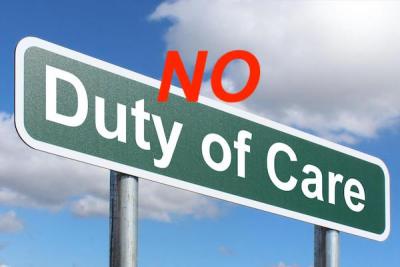Building Inspectors and Liability
The recent Court of Appeal case, Lessees and Management Company of Herons Court v Heronslea Ltd and others [2019] EWCA Civ 1423 decided a narrow but important point: holding that building inspectors, here the NHBC Building Control Services Ltd (‘BCS’), do not owe a duty under the Defective Premises Act 1972 (DPA). Given the difficulties pursuing other private law claims it is likely that many will be turning to the DPA for a remedy for defective building, including for the fire safety problems that have come to light post-Grenfell. This post outlines (1) the building control inspection system, (2) the DPA, and (3) the Herons Court decision, with some concluding reflections.
Posted:
Time to read:
Building control inspection

What are the consequences of the Herons Court decision?
Image shared under the CC0 licence, obtained from MaxPixel
The Court of Appeal explains how the building control inspection system has developed. The first building regulations were introduced in 1965 and at that time only the local authority could carry out inspections. The Building Act 1984 made provision for the introduction of the AI regime via a system of certificates. The duty imposed on AIs is now contained in reg 8 of the Building (Approved Inspectors etc) Regulations 2010 and requires them to ‘take such steps as are reasonable to enable him to be satisfied within the limits of professional skill and care’ that building regulations are complied with. It appears a significant proportion of inspections are now done privately. Inside Housing asked local authorities with ACM cladding in their areas who supplied completion certificates. Of the respondents, 37% were signed off by local authorities, 33% by a range of AIs, and 30% by the NHBC (as in Herons Court).
This privatisation of building control has many critics. Inside Housing notes that there have been concerns about how ‘rigorous the checking is’ and of the risk of conflicts of interest. NHBC has significant market share and some have questioned whether BCS operates sufficiently independently of the warranty arm of NHBC, particularly noting that Buildmark cover for Building Regulations non-compliance is only available if BCS has been the AI. The Hackitt Independent Review of Building Regulations and Fire Safety noted key weaknesses in this regulatory model, such as ‘incentives for building control competitors to attract business by offering minimal interventions or supportive interpretations to contractors’. Given these kinds of concerns, the question arises as to how AIs (and local authority building inspectors) can be held accountable. A spokesperson for the NHBC quoted by Inside Housing ‘said that the buck stops with the builder not the inspector.’ If, however, as has been argued, AIs do come within s. 1(1) of the DPA, this would provide a route for holding AIs to account. But this has now been shut down by Herons Court.
The DPA

The relevant section of the DPA provides that ‘a person taking on work for or in connection with the provision of a dwelling … owes a duty … to see that the work … is done in a workmanlike or, as the case may be, professional manner, with proper materials and so that as regards that work the dwelling will be fit for habitation when completed’. By s. 1(4) the duty also extends to anyone arranging for another to take on that work – essentially, developers. The duty is owed to anyone ordering that work and anyone who acquires an interest in the dwelling (and so would include leaseholders).
Initially dwellings sold under the NHBC Buildmark scheme were exempted from the s. 1 duty (s. 2) but that exemption was withdrawn in 1979. The DPA has been referred to as a ‘remarkably underused piece of legislation’, particularly as it appears to fill a gap in the common law which has not permitted recovery for defective building work through the tort of negligence since the House of Lords closed the door for recovery for pure economic loss in the 1991 case of Murphy v Brentwood. Liability under s. 1 DPA is thought to be strict (and proper care will not be a defence), as noted by Waksman J in Herons Court at first instance ([para 37], referring to Keating on Construction Contracts). Further, it was held in Rendlesham Estates plc v Barr that although the ‘dwelling’ is the individual apartment and other parts to which the occupier has exclusive access (such as a balcony) [para 46], the work ‘in connection with’ the provision of the flat will include work to the ‘structural and common parts of each block’ [47]. Rendlesham Estates also held that ‘fitness for habitation’ requires defects to be looked at ‘as a whole’ and taking account of ‘all the types of person’ who might live there. Given this, blocks of flats that can only be safely occupied with the additional measure of ‘waking watch’ will surely not be ‘fit for habitation’ and the DPA therefore provides an avenue of potential redress.
The Herons Court litigation
Herons Court is a block of 12 flats built in 2012. The claim was brought against four defendants: the developer, contractor, NHBC, and the AI, BCS. It was alleged there were 101 individual breaches of building regulations, a large number concerning fire protection. The Court of Appeal case discussed here was not the hearing on the substantive issues (whether work was properly done, whether the premises were fit for habitation etc.) but a strike out application brought by BCS (interestingly, not also by NHBC) on the preliminary issue as to whether BCS owes a duty under the DPA in the first place.
The Court of Appeal reasoning centres on the wording of s. 1(1). The way that section 1 is worded shows that the ‘focus is … very much on the doing of the work’ [para 38] to do with the ‘bringing of that dwelling into physical existence’ [para 39]. The emphasis is on ‘those who do work which positively contributes to the creation of the dwelling’. This can include members of the design team, such as architects and engineers, but does not ‘include those whose role is the essentially negative one of seeing that no work is done which contravenes building regulations’ [para 40]. Therefore ‘an AI performing statutory functions does not fall within s 1(1) DPA 1972 on its natural and ordinary meaning’ [para 44].
Although the decision was based on the wording of s. 1 DPA, the Court of Appeal also said that support for this could be found in Murphy v Brentwood. There it was noted that statute had not imposed the burden of acting as insurers of buildings on local authorities, and it was not the role of the courts to step in to provide consumer protection. An AI is no different.
Reflections

The DPA limitation period of 6 years is not kind to claimants
Image by Nathan Bunney
As noted elsewhere, limitation periods are a major constraint in pursuing remedies. Under the DPA, the limitation period runs for six years from completion of the dwelling (s. 1(5)). This six-year limit is particularly harsh to claimants only discovering fire safety defects post-Grenfell; time should, but does not, run from the moment when the defect is apparent. In Herons Court the block was built in 2012, and proceedings issued in April 2018. It is evident from references in the first instance judgement about the vagueness of aspects of the claim that the claimants were up against the clock. Further, as it is the defendants who hold all of the cards in terms of details about building construction, fire risk assessments, controlling access to the parts of the building needed for intrusive investigation etc., it is unsurprising that claimants find it difficult to particularise the alleged breaches.
Post-Grenfell there is an emerging crisis as AIs are finding it hard to secure insurance. According to Inside Housing, one of the two brokers who cover AIs withdrew from this market at the end of 2018 and at least one AI has filed for voluntary liquidation. Although Grenfell has highlighted the importance and risk of inspection work, it is interesting that Herons Court operates to reduce legal exposure.
Herons Court has shut down the possibility of suing building inspectors by using the DPA. Nor can they be sued in negligence. This leads on to the question of how building inspectors can be held to account. The Building Act 1984 s. 38 makes provision for breach of a duty imposed by building regulations to be actionable so far as it causes damages, but the section has not been brought into force so as to enable claims to be made. This was noted at first instance in Herons Court [para 36] and Waksman J noted that the fact it was ‘it is contemplated that there would be a separate freestanding regime for any civil liability … militates, to some extent, against the notion that approved inspectors should be subject to’ s. 1 DPA. The Government is currently consulting on whether this should be brought into force (paras 370-372) but without reform to recovery for economic loss it is unclear what difference this would make.
__________
How to cite this blog post (Harvard style)
Bright, S. (2019). Building Inspectors and Liability. Available at: https://www.law.ox.ac.uk/housing-after-grenfell/blog/2019/09/building-inspectors-and-liability (Accessed [date]).
Share:
